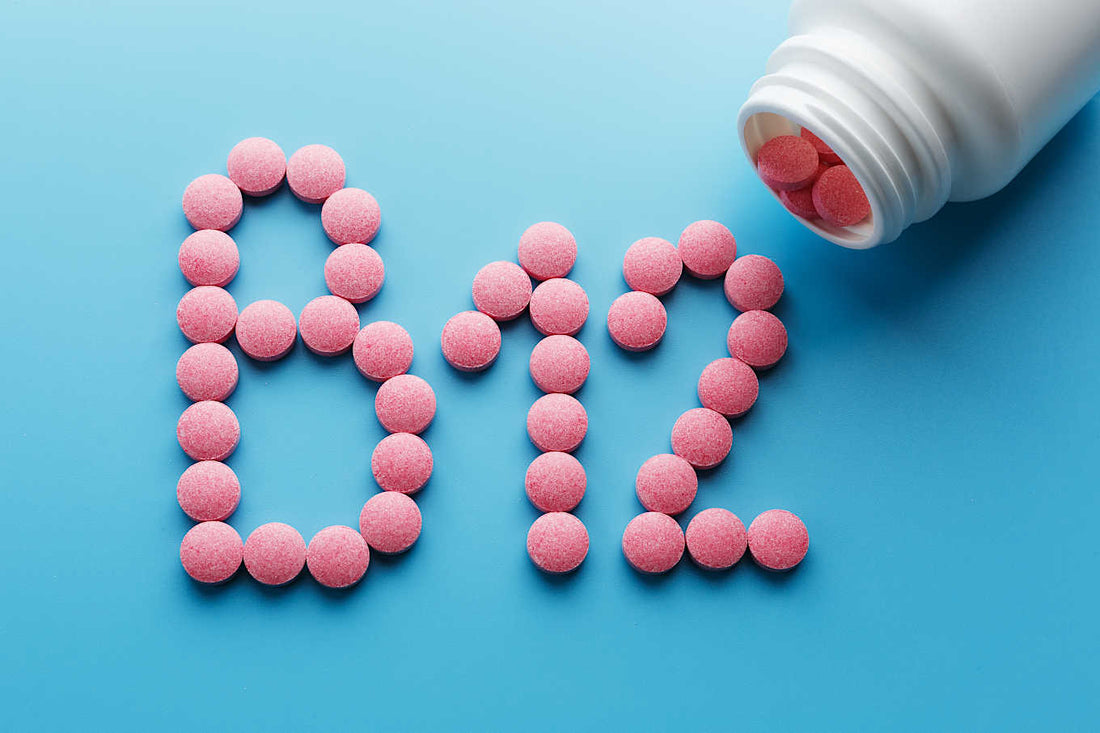The main function of vitamin B12 in our body is for the body to utilize it for nerve function, red blood cell formation, DNA synthesis, and cellular metabolism. Furthermore, vitamin B12 is also used in the metabolism of homocysteine. Homocysteine is a by-product of the metabolism of amino acids and accumulation of this can lead to an increased risk of developing heart disease, stroke, and dementia. Also, vitamin B12 deficiency can lead to megaloblastic anemia, and peripheral neuropathy such as muscle weakness, numbness, tingling sensations, and fatigue.
Now can’t we get this vitamin from a whole-food, plant-based diet? After all, if it is the only diet proven to reverse a lot of the major chronic illnesses that we have today then for sure we can get this from a whole-food, plant-based diet. Well, the answer is No. Vitamin B12 is only made by bacteria and is not produced by any plant or animal. This is the reason why we hear about or see strict vegetarians or those who follow the diet to still feel the symptoms of vitamin B12 deficiency and succumb to the same diseases that a whole-food, plant-based diet is meant to reverse. It is because they are vitamin B12 deficient.
Now, where can we get this naturally? We get this from the animal food products we consume through the food chain. How does this happen? This starts from the bacteria in the soil and bodies of water. Of course, there will be animals feeding and grazing in these environments and while they are feeding, they would also eat the bacteria in their food. When these bacteria enter the body of the animals, the bacteria would continue producing vitamin B12 and the animals would store the vitamin B12 in their body. Now, we humans would then farm these animals, slaughter them, and eat them. In this way, the vitamin B12 stored in the flesh of the animals we consume would be transferred to us humans. Another way where we get vitamin B12 naturally is through the water that we drink. In the olden days, we source our water directly from wells, springs, rivers, and lakes and we know that water from these sources would be teeming with bacteria. This source of vitamin B12 was eliminated through the advancement of hygiene technology and preventive strategies that we use in modern times to prevent water-borne infections.
Now it may seem that it is intuitive to eat both plant and animal food products since it is the most natural way we can get all essential nutrients for human life. However, the absorption of vitamin B12 decreases as we age. Furthermore, it is also in our best interest to limit/avoid the consumption of animal food products because of their detrimental effects on human health. So, it is inevitable that we will become vitamin B12 deficient at some point in our lives. Knowing this, there would be no other way to compensate but to take a vitamin B12 supplement.
There are different types of vitamin B12 with different doses and packaging in the market. So how much should one take, which one to take, how do you take it?
There are four types of vitamin B12 on the market today. These are cyanocobalamin, methylcobalamin, adenosylcobalamin, and hydroxycobalamin. Cyanocobalamin is the synthetic form of vitamin B12 and it is the most shelf-stable because of the cyanide group. Some of you might think that this supplement is toxic but it actually isn’t. This is because the amount of cyanide in cyanocobalamin is so far below the maximum dose where there is no risk that it does not pose any threat to our body at all. When we take cyanocobalamin, the cyanide group is separated to form adenosylcobalamin and methylcobalamin, which are the active forms of vitamin B12, to be used for metabolic processes. The cyanide is then excreted from the body through the kidneys. Although this form of vitamin B12 is the most shelf-stable form, the possibility of intoxication should be considered in patients with renal insufficiency or an impaired kidney function. For patients with this condition, I would suggest to use methylcobalamin or hydroxycobalamin.
Methylcobalamin has a greater biochemical efficiency in that it can generate higher levels of enzymes, stored in greater amounts in the liver, and excreted less than cyanocobalamin. The problem is, it has a poorer storage stability than cyanocobalamin so it can be more expensive.
Hydroxycobalamin is only used during cyanide poisoning or in individuals with rare genetic defects that affects the production of methylcobalamin and adenosylcobalamin from the use of cyanocobalamin.
Adenosylcobalamin is one of the active forms of vitamin B12 that gets produced with use of cyanocobalamin.
There are clearly advantages and disadvantages with each form of vitamin B12. Considering the shelf-life, cost, metabolic effectiveness, and patient condition, here are my recommendations. If you have kidneys which are functioning properly, my dose recommendation is 500 micrograms with any of the above forms once per day. If you have an impaired kidney function (glomerular filtration rate [eGFR] <50 mL/min/1.73 m2), my dose recommendation is 500 micrograms of methylcobalamin once per day. These dose recommendations are regardless of age.
The common modes of administering vitamin B12 are oral, intramuscular, or sublingual. Intramuscular or injectables are more commonly used in the healthcare setting and is usually done to rapidly replenish vitamin B12 in deficient patients. One disadvantage of this is that it causes pain. Obviously, the better choice would oral or sublingual form of vitamin B12 and these are just as effective as injectables in replenishing vitamin B12. The oral and sublingual form of vitamin B12 are similar in terms of bioavailability however the sublingual form has a better profile when it comes to absorption. Furthermore, the sublingual form has advantages in certain conditions when the patient is not able or has difficulty swallowing or when the patient underwent certain procedures that results in intestinal malabsorption.
Your partner in your cancer journey,
Jansen T. Calalan, MD, DPCLM, DipIBLM
Lifestyle Medicine

